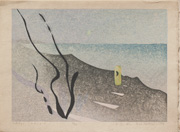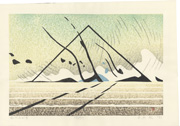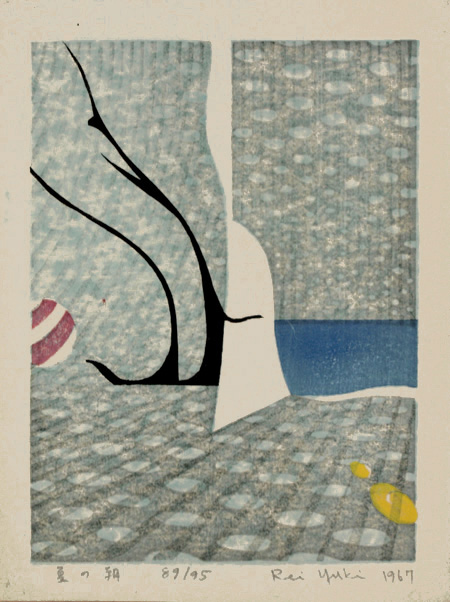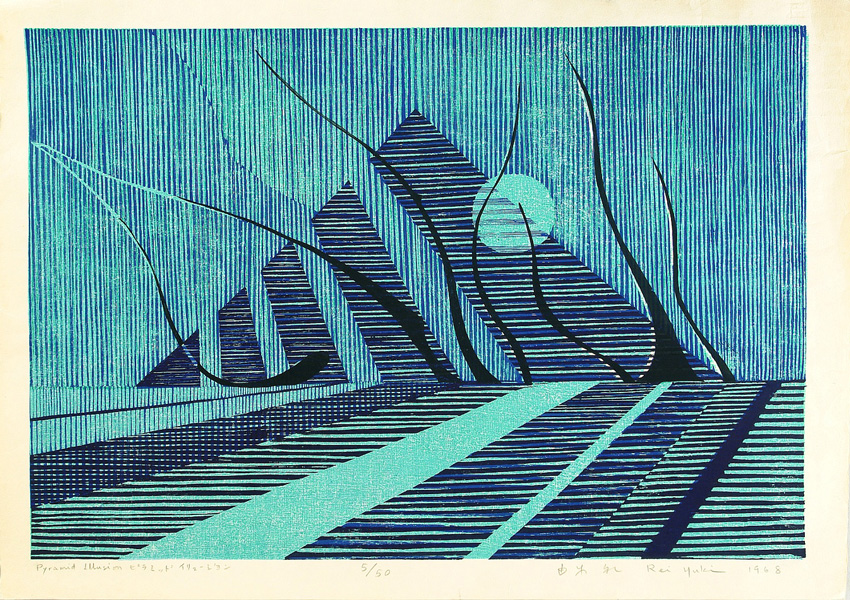Prints in Collection
Sound of the Wind, 1991
IHL Cat. #1589
Biographical Data
Biography
Rei Yuki 由木礼 (1928-2003)
Sources: Guide to Modern Japanese Woodblock Prints: 1900-1975, Helen Merritt, University of Hawaii Press, 1992, p. 179; Collecting Modern Japanese Prints, Then and Now, Mary and Norman Tolman, Charles E. Tuttle Company, 1994, p. 247; Who's Who in Modern Japanese Prints, Frances Blakemore, Weatherhill, 1975, p. 247.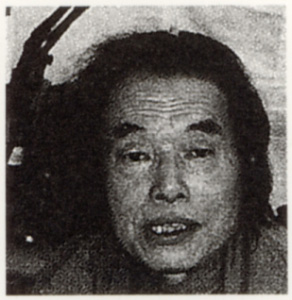 | Little information is available on the life of Rei Yuki, a sosaku hanga artist who exhibited internationally and co-authored Japanese Printmaking, A Handbook of Traditional & Modern Techniques with the well-known artist Yoshida Toshi (1911-1995) in 1966. His work is held in a number of museums including the British Museum; Carnegie Museum of Art; Los Angeles County Museum of Art; Osaka National Museum of International Art; Cincinnati Art Museum; Musée Vivant-Denon, France; Yokohama Museum; and the Art Gallery of New South Wales. In 2005, a catalogue raisonne of his work was published under the title 由木礼全版画集 Rei Yuki Complete Print Works Catalogue Raisonné. What is known is that he was born Uemura Noria in Tokyo in 1928 and graduated from Athenee-Francais, Tokyo, a French language school, in |
In describing Rei's work Francis Blakemore called his prints “delicate fantasies, scenes of landscape that can exist only in the imagination” and goes on to say:
| The texture of the woodblock itself creates dappled tones and fragile shades. The works are light, yet the source of the light is hidden behind fences and arches. It is a light defined by shadows, creating a mood of timeless suspension. Leafless branches cast foreground shadows, mysteriously real and abstract, stark and delicate. The texture of the block, structural unity of the geometric ground figures, subdued coloration and shading, and magical, waving forms together create a locus, a place that is both definite and infinite, haunting and unassuming, vague and too vivid to be mere fantasy.3 |
In describing his own work the artist has said "In my case, I draw lines almost automatically to let a conception or emotion emerge; I seldom sketch something objective."4
Inventor of the Ball-Bearing Baren
Source: Princeton University Library Chronicle,Volume LVII 1995-1996 p.165 http://libweb5.princeton.edu/visual_materials/pulc/pulc_v_57_n_1.pdf
An article on a 1995 exhibition of Japanese prints at Princeton University notes that "newly invented ball-bearing baren designed by the renowned woodblock artist Rei Yuki .... enable artists to avoid the often debilitating bursitis caused by the constant pressing and pushing of traditional barens in making their prints. Truly an improvement, the ball-bearings help the tool to slide effortlessly across the paper, resulting in excellent transfers of the ink to the paper."
Catalog Raisonné
Rei Yuki Complete Print Works Catalogue Raisonné [Yuki Rei zen hangashū], Rei Yuki, Reifū Shobō [玲風書房], 2005
1 photo scanned from Tokyo Message to 21st Century: Tokyo Hyakkei (One Hundred Views of Tokyo) - The Fifty Prints of The First Half - 1989-1993, Japan Print Association, 1994, p. 106.
2 The Shun'yōkai (Shunyō-kai) was formed in 1922 by artists who withdrew from the Inten to promote Western-style art. It established a print room in 1928 and published the magazine Atoriei (Atelier). The organization is still active today and their website can be found at http://shunyo-kai.or.jp/
3 Who's Who in Modern Japanese Prints, Frances Blakemore, Weatherhill, 1975, p. 246
4 op cit Tokyo Message
4 op cit Tokyo Message



